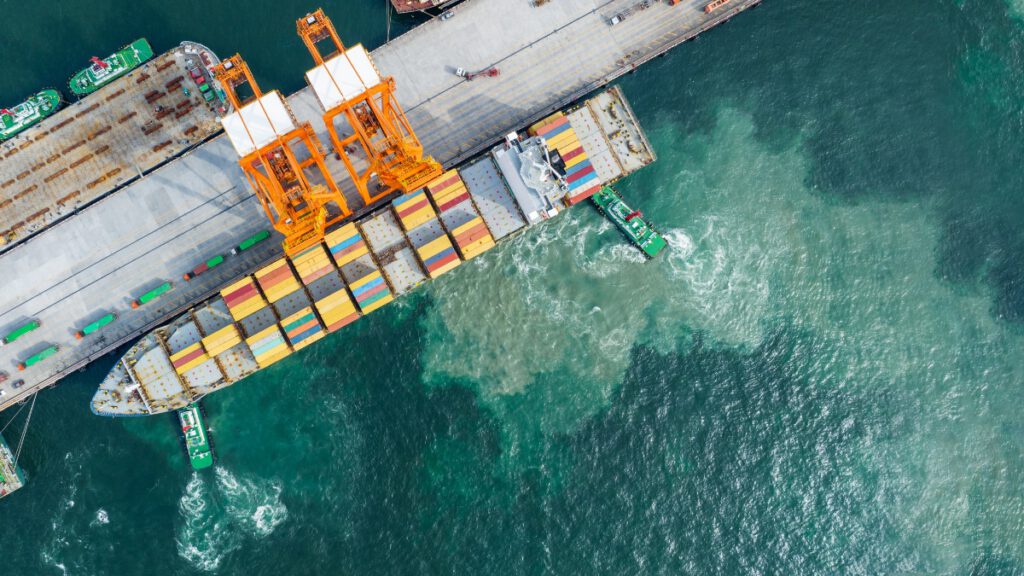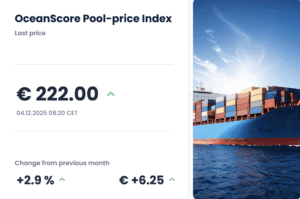The United Kingdom’s Emission Trading Scheme (UK ETS) is on track for a major expansion, with the maritime sector due to enter the system starting in 2026. Shipping companies calling at UK ports must now prepare for a new layer of carbon pricing rules, aligning with the UK’s broader decarbonization strategy while differing in key ways from the EU ETS.
Understanding the UK ETS Maritime Framework: What We Know So Far
The UK ETS maritime inclusion is a central component of the UK’s net-zero plan, building on lessons learned from the EU’s system while adapting to domestic priorities. Like the EU ETS, the UK framework will apply to commercial vessels over 5,000 gross tonnes engaged in cargo or passenger transport.
However, the UK ETS is expected to be more comprehensive in scope by covering not just carbon dioxide (CO₂), but also methane (CH₄) and nitrous oxide (N₂O), reflecting the government’s commitment to tackling all significant greenhouse gases from maritime operations.
Monitoring, reporting, and verification (MRV) standards are expected to mirror those used in the EU ETS and EU MRV, reducing duplication for shipowners already reporting to European regulators.
Scope and Coverage: Domestic First, International Later
The UK ETS will initially focus on domestic shipping routes, meaning:
- 100% of emissions from voyages between UK ports must be reported and offset with allowances.
- Emissions at berth in UK ports will also be fully covered, whether the vessel is on a domestic or international voyage.
For international routes, the UK is currently considering a phased approach. Early proposals suggest the system may later capture 50% of emissions for voyages between the UK and non-UK ports (similar to EU ETS treatment).
Specific carve-outs for Crown Dependencies, British Overseas Territories, and lifeline ferry services remain under consultation.
This staged approach gives companies time to adapt, but also introduces complexity in route-based reporting.
Coordination with the EU ETS
A key question for shipowners is whether the UK ETS will link with the EU ETS. The UK government has signalled interest in creating a mechanism for mutual recognition of allowances or at least harmonised reporting to avoid double-counting.
If successful, this would allow shipping companies operating across UK and EU waters to:
- Use a single monitoring and reporting process.
- Potentially trade or surrender EUAs (EU Allowances) and UKAs (UK Allowances) interchangeably.
- Benefit from increased market liquidity and potentially lower compliance costs.
Until a formal linking agreement is finalised, companies will need to track exposure to both systems separately.
Compliance Checklist
Here’s a practical checklist based on what is confirmed or highly likely for UK ETS maritime inclusion:
| Action Item | Recommended Timing | Notes |
|---|
| Identify in-scope vessels and routes (≥5,000 GT) | Q3 2025 | Domestic UK voyages and at-berth emissions will be included from 2026. |
| Audit MRV systems for CO₂ (and assess CH₄, N₂O readiness) | Q4 2025 | Final gas scope not confirmed; EU MRV alignment likely. |
| Align reporting processes for EU ETS and UK ETS | Q4 2025 – Q1 2026 | Use systems that can support both to reduce duplication. |
| Model emissions and estimate allowance needs | Early 2026 | Helps plan for cost exposure and trading strategy. |
| Develop a UKA procurement approach | Early 2026 | Market liquidity expected to grow; trading rules still evolving. |
| Train operational and compliance staff | Mid-2026 | Focus on MRV protocols and berth/routing definitions. |
| Deploy a tech platform for integrated ETS tracking | By mid-2026 | A single interface for EU ETS and UK ETS helps reduce admin complexity. |
Preparing for Compliance: Reducing Complexity
Managing compliance across multiple carbon pricing systems can be challenging, especially as the UK ETS rules continue to take shape. While many details are still under development, companies can already start preparing by:
- Reviewing their emissions data and MRV processes to ensure they can meet both EU ETS and potential UK ETS requirements.
- Assessing technology solutions that can integrate EU ETS tracking today and be adapted for UK ETS once its rules are finalised.
- Building internal awareness so operational and commercial teams understand how upcoming UK rules may affect reporting and costs.
OceanScore is closely following developments and will keep clients informed as the UK ETS framework is clarified, so they can prepare with confidence and avoid last-minute disruptions.
Strategic Outlook
The UK ETS maritime rules are likely to evolve, potentially expanding to cover international voyages and additional vessel types. Companies investing now in flexible systems and forward-looking compliance strategies will be better equipped to handle:
- Future changes to voyage scope.
- Potential linking with the EU ETS or other carbon markets.
- Interactions with upcoming IMO carbon intensity measures and national climate rules in other jurisdictions.
The Conclusion
The UK ETS maritime expansion represents a pivotal shift for shipping companies operating in UK waters. With full implementation expected starting in 2026, early preparation is critical.
Shipowners who invest now in data accuracy, allowance strategies, and integrated compliance technology will not only avoid penalties but also be better positioned as carbon markets mature.
Disclaimer – Updated as of 23 July 2025
The UK government has recently indicated that the UK ETS for maritime is now targeted to launch on July 1, 2026. While the timeline may still shift, activity around the scheme is increasing and guidance is becoming more specific.
At this stage, the focus remains on intra-UK voyages and UK port stops, alongside parts of the global fleet already subject to EU ETS and FuelEU Maritime.
Although its commercial impact is currently smaller than EU measures, the UK ETS is too relevant for shipping companies to overlook. OceanScore will continue to monitor developments and keep clients informed as details evolve.























































